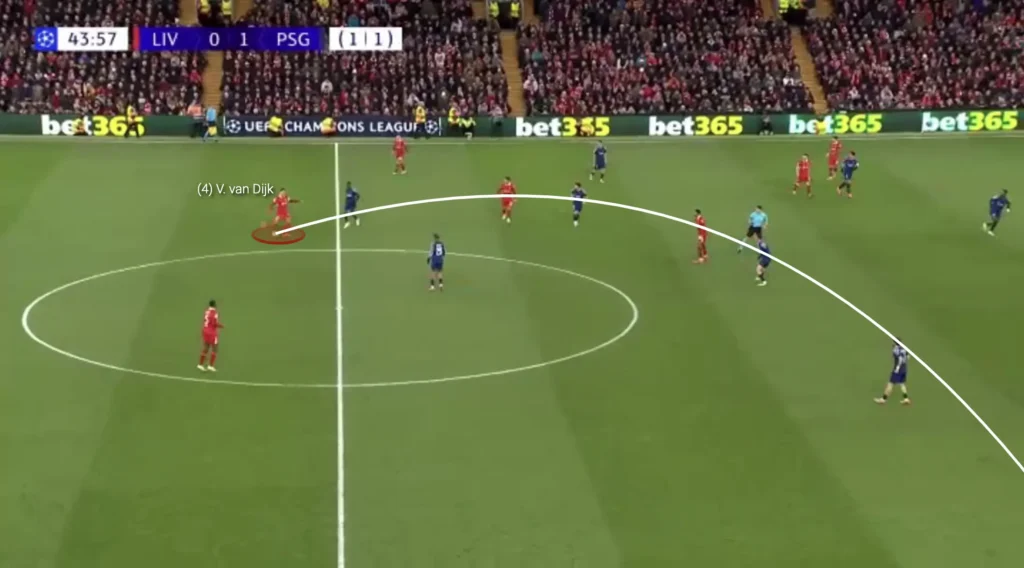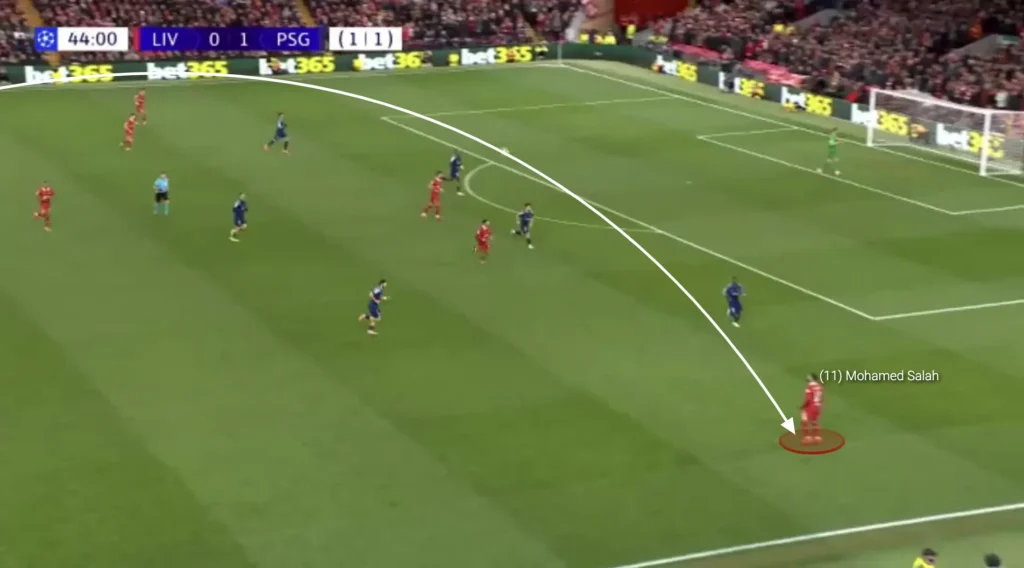In modern football, teams are constantly looking for ways to break down well-structured defenses and create attacking opportunities. One of the most effective tactical tools to achieve this is switching play. By rapidly transferring the ball from one side of the pitch to the other, teams can exploit space, stretch defensive lines, and bypass pressing structures. This concept is widely used at all levels of the game, from grassroots football to elite competitions, as it allows teams to shift the opposition’s focus and generate goal-scoring chances.
Switching play is not just about long diagonal passes; it involves a range of methods, including lateral ball circulation and intelligent combination play. Teams that master this tactic gain a significant advantage in dictating the tempo of the game and breaking through defensive setups. Understanding the principles and execution of switching play is essential for coaches, analysts, and players aiming to improve their tactical awareness and overall effectiveness on the pitch.
What Is Switching Play?
Switching play is a fundamental tactical concept in football that involves shifting the ball from one side of the pitch to the other, often in an attempt to exploit space, bypass defensive pressure, and create goal-scoring opportunities. This method is used to destabilize an opposition’s defensive shape, force their players to readjust their positions, and ultimately open up attacking possibilities.
When a team builds an attack on one flank, the opposition naturally shifts towards that side, compacting their defensive structure. This movement can leave the opposite flank under-defended or exposed. A well-timed switch of play takes advantage of these situations, allowing the attacking team to move the ball quickly to an area where they have more space and time to create danger.
Why Is Switching Play Important?
Switching play is crucial for several tactical reasons:
1. Exploiting Space
One of the primary reasons teams switch play is to exploit space on the weak side. When the opposition overloads one side to close down passing options and apply pressure, they often leave the opposite side of the pitch less protected. By quickly transferring the ball across, the attacking team can take advantage of this and create goal-scoring opportunities.
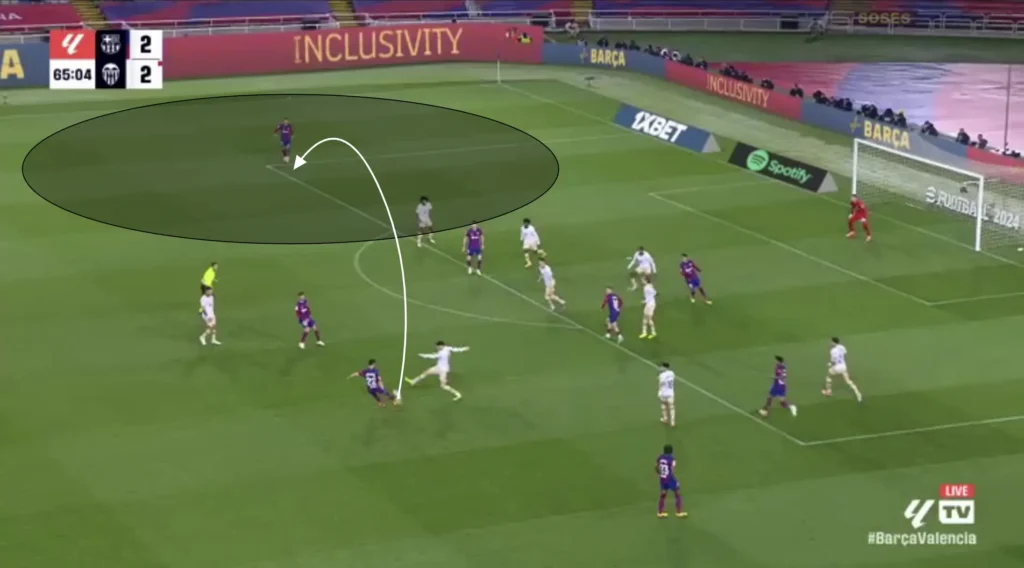
2. Bypassing Defensive Pressure
High-pressing teams aim to suffocate ball progression by committing multiple players to a particular zone. When under intense pressure, a switch of play offers a quick escape route. By shifting the ball to the opposite side, the team in possession can bypass pressing traps and restart their attacking build-up with more control and space.
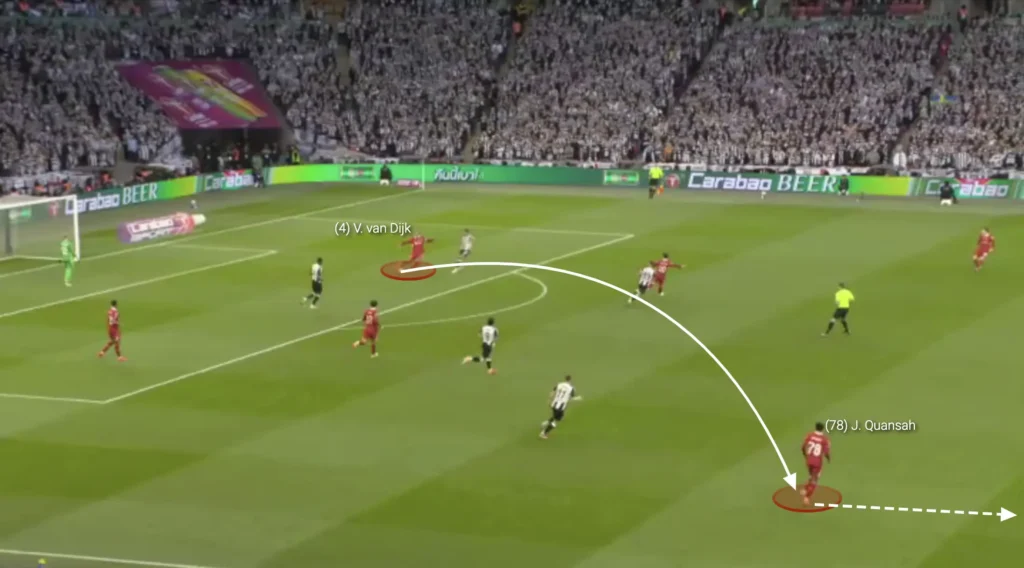
3. Stretching the Opposition’s Defensive Shape
A compact defensive block is difficult to break down, especially in the final third. However, frequent and well-executed switches force defenders to shift across the field repeatedly. This movement increases the chances of defensive disorganization, creating gaps that attackers can exploit through crosses, through balls, or one-on-one situations.

4. Creating Overloads and Numerical Superiorities
If executed efficiently, a switch of play can result in numerical superiority on the weak side. For instance, if a fullback receives the ball on the far side with little opposition pressure, he can drive forward, combine with wingers or central players, and create dangerous attacking sequences.
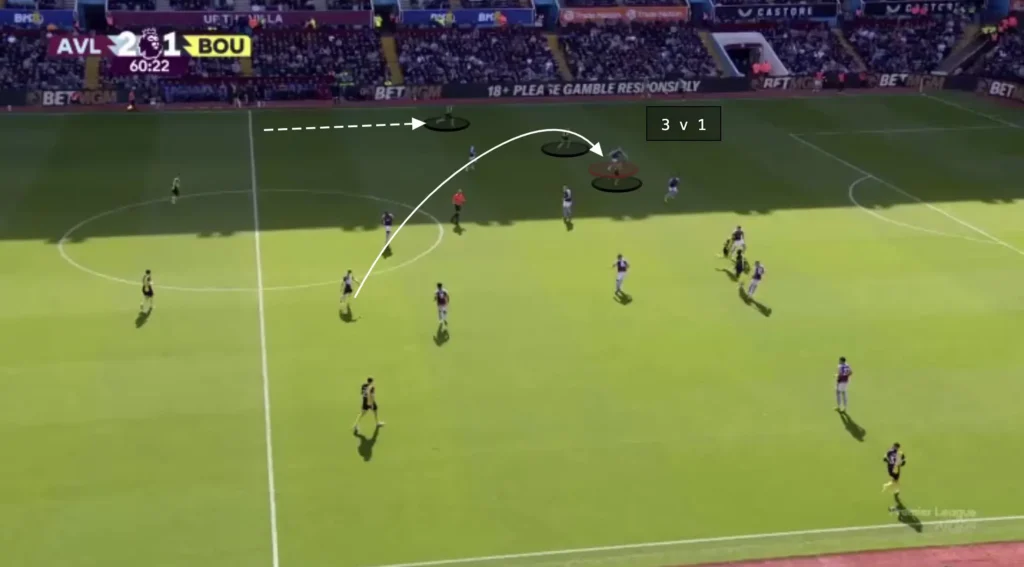
Methods of Switching Play
Switching play can be executed in multiple ways, depending on a team’s tactical setup and player abilities. The most common methods include:
1. Long Diagonal Passes
A direct long pass from one side to the other is one of the quickest ways to switch play. This approach is especially useful when teams have wingers or fullbacks who can exploit wide areas effectively. Deep-lying playmakers or ball-playing defenders typically execute these passes, looking to find a teammate in space on the far side.

2. Lateral Ball Circulation
Instead of a single long pass, teams can circulate the ball laterally through multiple short passes. This method involves shifting the ball across the midfield and defense before finding a player on the weak side. While slower than a long diagonal, this approach helps maintain possession and can be more effective against well-structured defenses.
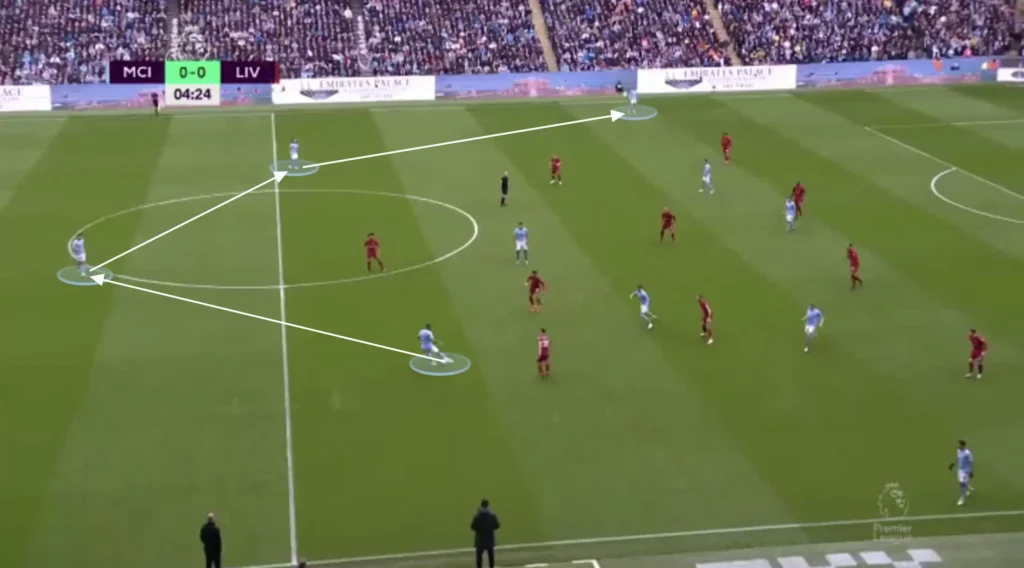
3. Third-Man Combinations
Sometimes, a direct switch is not possible due to pressing or limited passing angles. In such cases, a third player can act as an intermediary by receiving the ball and immediately redirecting it to the opposite side. This quick combination play ensures that the switch remains effective while avoiding turnovers.
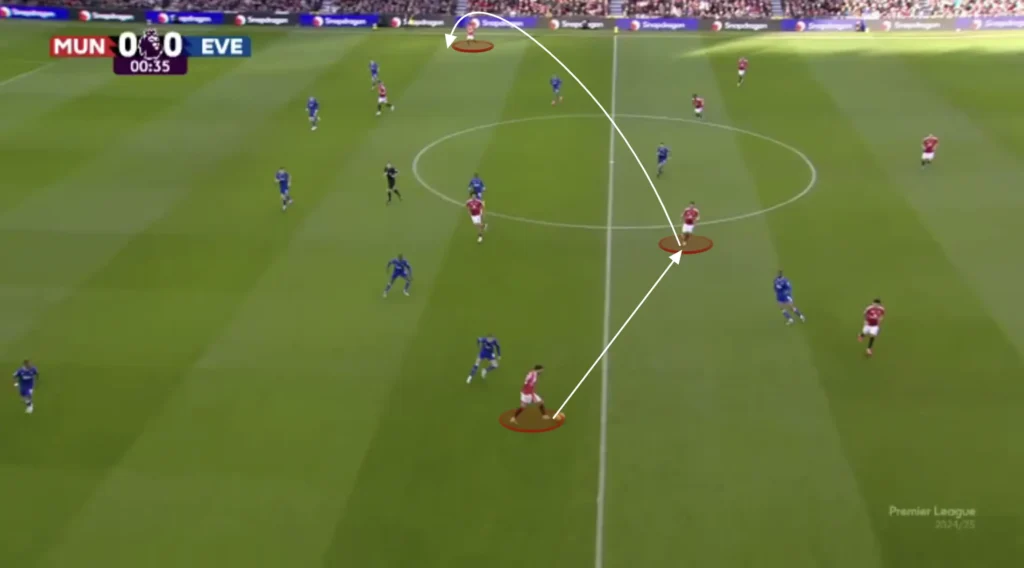
When to Use Switching Play
Switching play is most effective in the following scenarios:
- Against Compact Defensive Blocks: When opponents sit deep and pack the central areas, switches of play can help stretch their defensive shape and create crossing or cut-back opportunities.
- Against High-Pressing Teams: When the opposition applies intense pressure on one side, a well-executed switch can bypass the press and allow the attacking team to progress the ball more comfortably.
- To Isolate Key Players: If a team has a skillful winger who thrives in one-on-one situations, frequent switches can isolate them against a single defender, increasing the chances of a successful dribble or shot.
Key Players Involved in Switching Play
Several player profiles are crucial in effectively executing switches of play. These include:
1. Deep-Lying Playmakers (e.g., Toni Kroos, Rodri)
These midfielders possess exceptional passing range and vision, allowing them to pick out teammates across the field. Their ability to execute pinpoint long switches ensures that the team can move the ball efficiently from congested areas to open spaces.
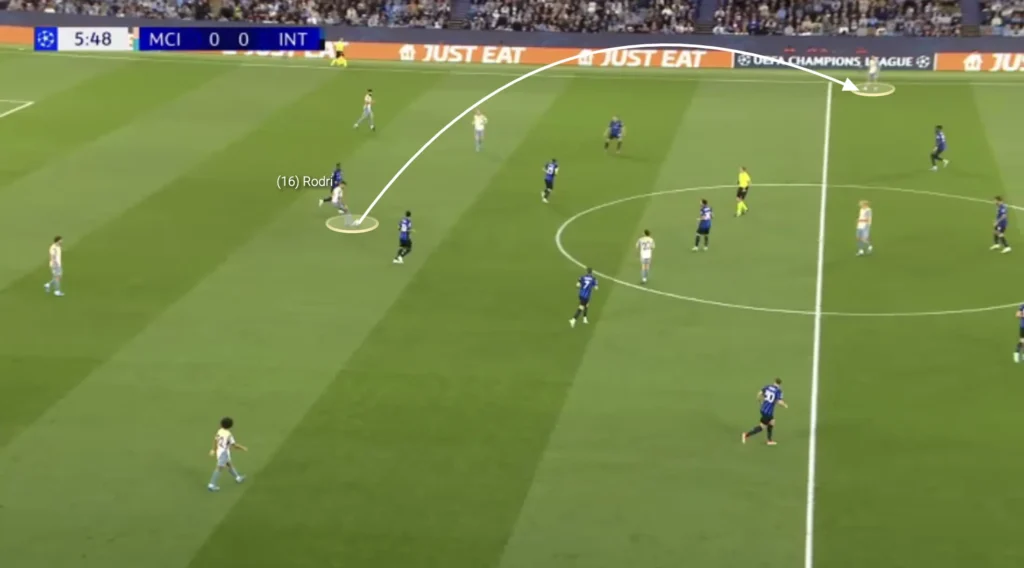
2. Ball-Playing Centre-Backs (e.g., Virgil van Dijk, John Stones)
Modern defenders are often tasked with initiating play from deep positions. A centre-back with strong passing ability can launch diagonal balls over an opposition block, instantly switching the point of attack and bypassing multiple defenders in the process.
3. Wing-Backs and Fullbacks (e.g., João Cancelo, Reece James)
Wide defenders play a key role in receiving switched balls and advancing play. Their ability to drive forward, deliver crosses, or cut inside provides attacking variation when switches of play are utilized.
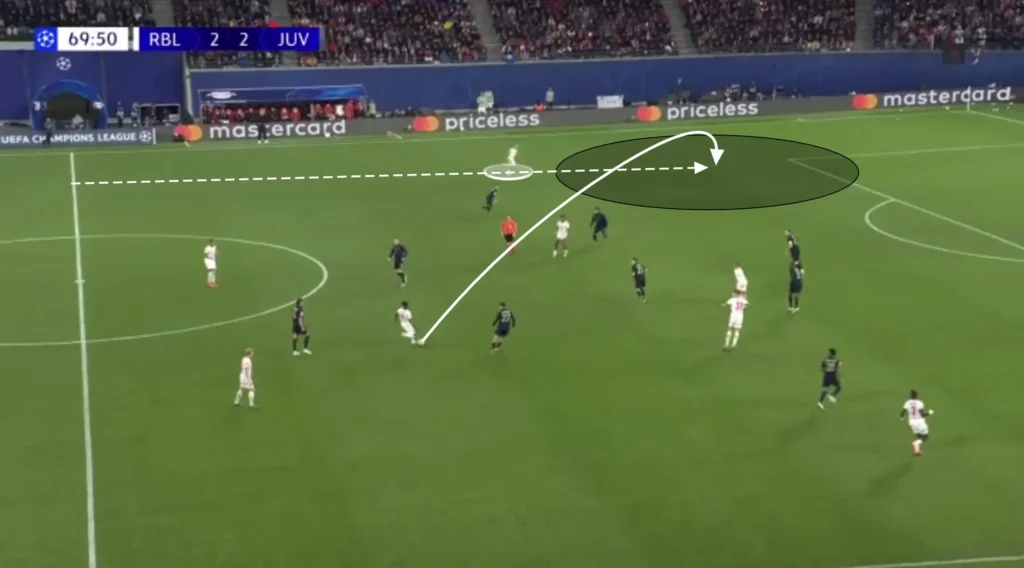
4. Wingers and Wide Midfielders (e.g., Mohamed Salah, Vinícius Júnior)
Wingers who are comfortable receiving long switches and attacking one-on-one against defenders can be game-changers. Their ability to exploit space on the weak side can lead to dangerous situations, especially when the switch is executed quickly.
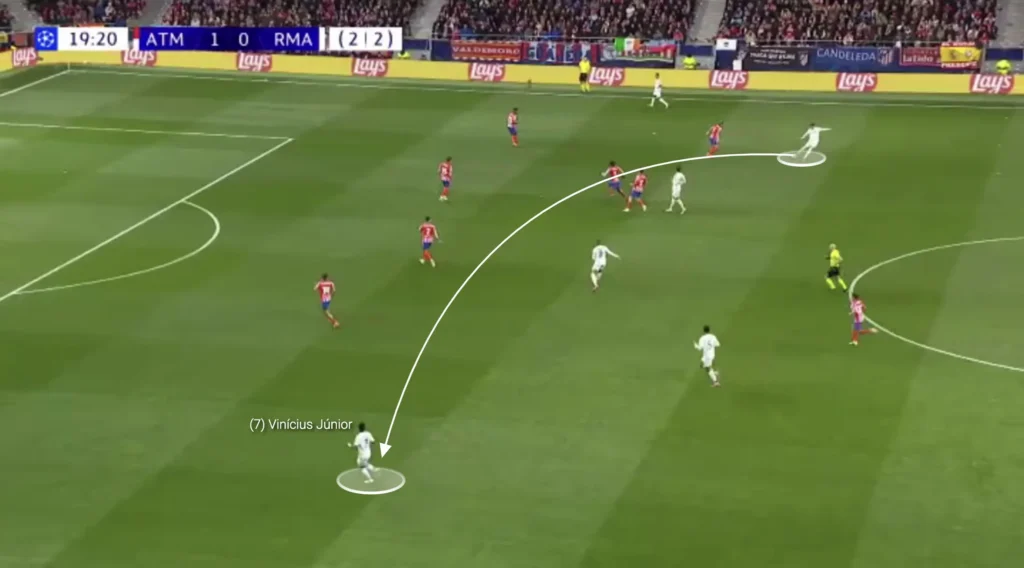
Conclusion
Switching play is an essential tactical tool in modern football, providing teams with the means to manipulate defensive structures, exploit space, and create goal-scoring chances. Whether through long diagonal passes, lateral ball circulation, or quick third-man combinations, the ability to switch play effectively is a hallmark of top-level teams.
A well-drilled team that understands when and how to switch play can control matches more efficiently, break down stubborn defenses, and maximize their attacking potential. For coaches, analysts, and players, mastering this concept is fundamental to understanding how to control the tempo of the game and unlock opposition defenses.

